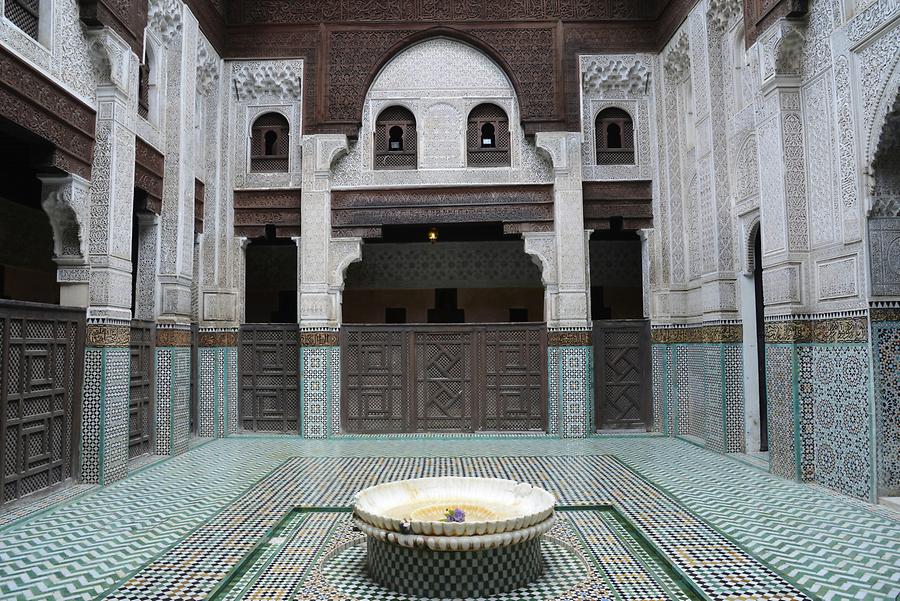Meknes - Bou Inania Madrasa#

Meknes - Bou Inania Madrasa, April 2013, © Gerhard Huber, under CC BY-NC 4.0 +Edu
The heart of the old town of Meknes is an Islamic university from the 14th century. The puritan Marinid dynasty built a madrasa in every city to support their religious fervour. As excellent builders, they led the Moorish architecture to unprecedented virtuosity.
The unadorned façades hide luxurious patios with a fountain in the centre and colonnades on the sides. Varied mosaics, arabesques cut into gypsum and friezes with the suras of the Koran carried out calligraphically decorate the walls. The Islamic ban on images resulted in an unprecedented perfection of ornamentation. Allegedly, the ban on portrayals of humans or animals in Islam dates from a personal dislike of Muhammad, but it is not anchored in the Koran. According to Muslim orthodoxy, an artist who depicts humans and animals realistically presumes a repetition of the divine act of creation and this is close to blasphemy.
Herzstück der Altstadt von Meknes bildet eine islamische Hochschule aus dem 14. Jahrhundert. Die sittenstrenge Dynastie der Meriniden ließ damals zur Unterstützung ihres religiösen Eifers in jeder Stadt eine Medrese errichten. Als exzellente Baumeister führten sie die maurische Architektur zu bislang unerreichter Kunstfertigkeit.
Hinter schmucklosen Fassaden verbergen sich prunkvolle Innenhöfe mit einem Springbrunnen in der Mitte und Kolonnadengängen an den Seiten. Variationsreiche Mosaike, in Gips geschnittene Arabesken und kalligraphisch ausgeführte Koransurenfriese schmücken die Wände. Aufgrund des islamischen Bilderverbots entwickelte sich die Ornamentik zu beispielloser Blüte. Das Verbot von menschlichen und tierischen Darstellungen im Islam geht angeblich auf eine persönliche Abneigung Mohammeds zurück, ist jedoch nicht im Koran verankert. Nach der muslimischen Orthodoxie maßt sich ein Künstler, der in realistischer Weise Menschen und Tiere darstellt, eine Wiederholung des göttlichen Schöpfungsaktes an und dies grenzt an Blasphemie.